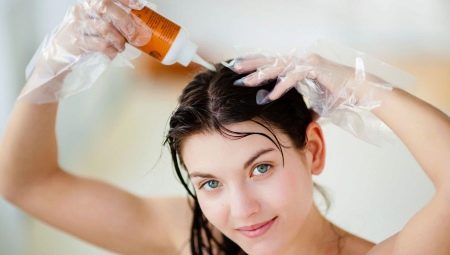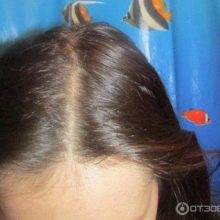How long should you keep the dye on your hair?

Hair coloring is a very popular procedure. Many women do it on their own. Often it seems that this is a very simple process: just apply the paint, hold the allotted amount of time, rinse - and a new hairstyle is ready.
Of course, coloring itself is not particularly difficult, it only requires thoroughness, accuracy and care. Why, then, does the result not always meet expectations?

Consequences of unsuccessful staining
The consequences that an incorrectly performed procedure can lead to, sometimes completely unexpected:
- the color does not correspond to the expected and is far from the one presented on the package;
- the shade turned out to be unpleasant;
- the color does not suit the owner;
- the strands became dull and naughty;
- hair splits, breaks, falls out.


And this is just a small list of possible problems. In many ways, they appear because, when planning to dye their hair, few people imagine what a complex chemical reaction it is, the successful result of which depends on many factors.
The time during which the procedure is carried out (it is called exposure) is one of these factors.
All possible unpleasant consequences, except for the incorrectly selected color, directly depend on both the type and quality of the paint, and on exposure.

Types of paint and duration of staining
Experts divide dyes into four groups. They differ in their effect on the hair and therefore in the exposure time.
Natural dyes
They do not harm the hair, on the contrary, they bring tangible benefits: they strengthen the roots, improve the structure, and have a positive effect on the condition of the scalp. These are henna, basma, cinnamon, chamomile, lemon, strong tea and coffee.
When staining with them, it is not necessary to observe a clear time frame.
- On the packaging with basma, the manufacturer indicates the holding time (it depends on the desired result, the country from which the agent was brought).
- On the basis of henna, cinnamon, chamomile, you can even make long-term nourishing hair masks (up to three hours). The duration of the procedure depends on the natural color, hair structure and the desired result. In order to get a beautiful shade, blondes need only 15 minutes, owners of light brown strands will need about half an hour, brown-haired women and brunettes - from an hour. The longer the exposure time, the more saturated the color will be.
- Lemon, tea, coffee are more often used for tint rinses.



Toning agents
The purpose of their use is to give hair a certain shade or to experiment. They are completely washed off very quickly - just wash your hair 1-3 times.
Exposure during application is from five minutes or more (indicated on the package), at this time it is useful to carry out a light massage of the scalp.



Semi-permanent paints without ammonia
They do not penetrate inside the hair, therefore, they do not violate its structure. The coloring pigment is distributed over the surface of the hair, gluing the scales. As a result, the strands are smooth, shiny and obedient, but a change in natural color is possible only by two or three shades (for blondes a little more), it will not be possible to radically change the color with their help.
You will have to dye your hair once every two to three weeks, since these dyes are quickly washed off, it will not be possible to paint over gray hair thoroughly and for a long time with their help. But a significant advantage is that there is practically no harm from them. Of course, it is impossible to completely exclude the harmful effect, but it is minimal.
The exact dyeing time is indicated on the packaging and is rarely more than thirty minutes. Despite the absence of aggressive substances, it is not worth increasing it arbitrarily, chemistry is still present in them. Hair won't say "thank you" for that.

Permanent paints
And finally, there are permanent permanent paints. They contain ammonia, hydrogen peroxide, and other chemicals. They allow you to radically change the color, reliably paint over gray hair, stay on the hair for a long time. But at the same time they negatively affect the hair structure, as they destroy the natural pigment and allow the coloring substances to penetrate deeply inside, permanently changing the original color.
The composition of modern professional cream paints includes products that make them safer. But nevertheless, when using these dyes, it is strictly forbidden to violate the rules specified in the instructions.


The exposure time is no more than twenty-five, less often thirty, minutes. It is not necessary to keep the dye on the hair longer, the color will not become more intense from this, but it is quite possible to damage, dry out the strands. Excessive exposure can even lead to hair loss.
Natural blondes should slightly reduce the dyeing time from the specified by 3-5-10 minutes... Light hair is thinner, easier to pigmentation. The same goes for loose, brittle, dry, damaged hair. For them, in advance, within 2-3 weeks, it is necessary to carry out restorative treatment and cut the split ends.
It is important to know that the staining time is calculated from the moment when the composition is completely applied to the required length, so you need to act quickly enough.



A few minutes before the end of the procedure it is recommended to carry out emulsification - moisten hair with water, beat the product on the hair and leave for a while. This simple manipulation activates chemical processes and distributes the paint more evenly.
Root coloring
It is no coincidence that manufacturers indicate in the instructions the exact time and sequence of actions for two processes: when it is required to dye the entire mass of hair and when dyeing only the roots. It is recommended to use the latter method if the roots have grown back, and on the rest of the hair the color has faded and washed off.
In this case, the paint is applied only to the roots and kept for 15–20 minutes, then it is distributed over the entire length of the strands and left for another 10-15 minutes. You should not neglect this rule, since in order to refresh the color, this time is quite enough, and additional chemical exposure will not bring any benefit to the hair.

After staining, it is not recommended to wash off the coloring compositions with hot water. It will cause additional harm by increasing the chemical reaction.
Rinsing with warm and then cool water will close the scales, the hair will become smoother and shinier.

Follow-up care
As a rule, a color fixer is included in the set with cream paint. It contains caring oils and other hair-beneficial substances. You definitely need to use it. It also needs to be kept on the hair for a sufficient time (about five minutes).
Further, care for colored hair should be carried out using special shampoos and rinses for colored hairas they contain substances that support pigmentation.
The use of tint products will increase the time between stains, help restore, maintain and deepen the color.


Hair health depends on both the general health and the manipulation carried out with them. Frequent dyeing, perm, heat treatment often lead to consequences that are difficult and sometimes impossible to eliminate. Therefore, the rules specified in the instructions are not a whim of the manufacturer, but a safety requirement.
Here are some tips on how to color your hair.








